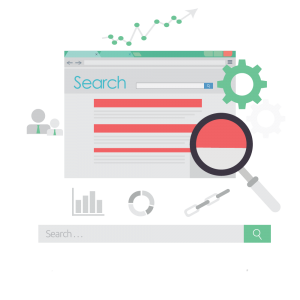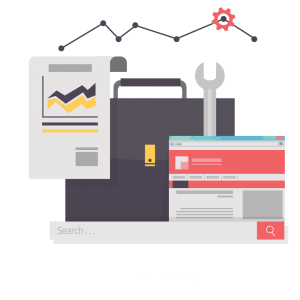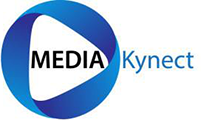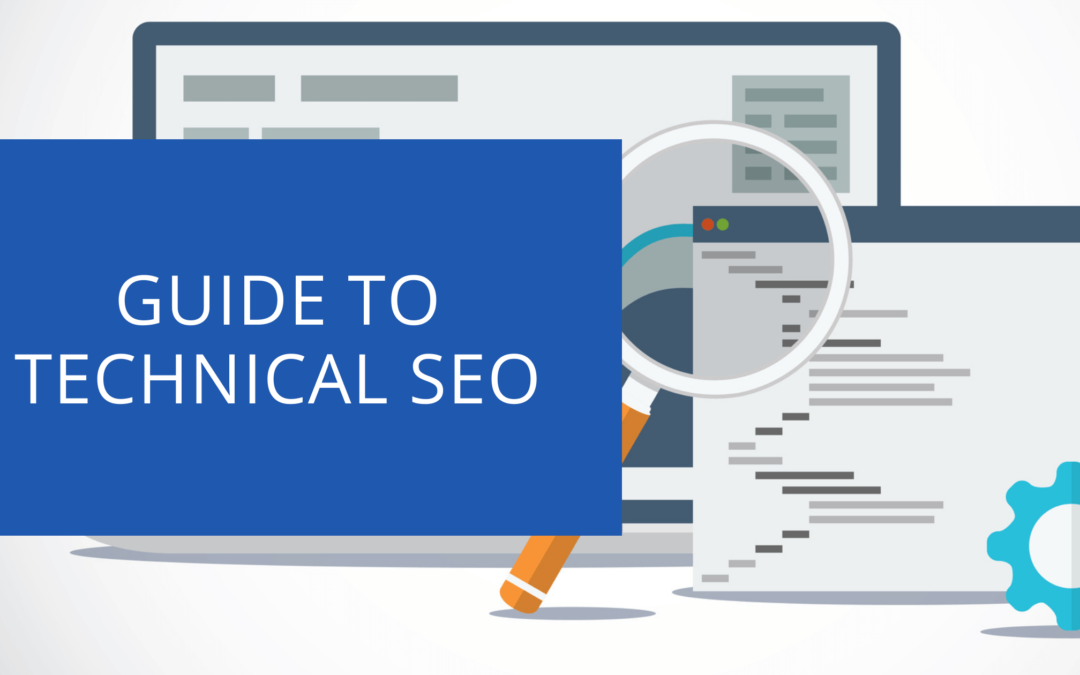Technical SEO covers a wide range of topics from site architecture, to URL structure, to crawling and indexing.
Technical SEO can be a complicated topic that can be hard to fully understand but it is an important part of website optimisation because it impacts how your site appears in search engine results.
This article will cover technical SEO in detail to give you a better understanding and the best practices so that you can make changes to improve your rankings.
Contents
301 redirects
301 redirects are used to permanently redirect web pages from one URL to another. They are often used when a website moves or changes its domain name, as it can be difficult for search engines to track and index URLs with changing parameters.
A 301 redirect tells the search engine that the original page has been permanently moved to a new location and that it should update its index accordingly. This helps to preserve the ranking of the old page, and can also help to prevent 404 errors.
There are a few best practices to follow when using 301 redirects:
- Make sure that the redirect is permanent (301 status code)
- Redirect the old URL to the new URL
- Use relative URLs where possible
- Avoid using 302 status codes, as they indicate a temporary redirect which will not preserve the ranking of the old page
- Check for duplicate content issues after implementing any redirects
- Use the same 301 redirect for both desktop and mobile versions of your site
404 pages
 HTTP 404 (File not found) is a standard web browser error message given after an attempt to access a Web page results in the server indicating that it cannot find the requested resource.
HTTP 404 (File not found) is a standard web browser error message given after an attempt to access a Web page results in the server indicating that it cannot find the requested resource.
In many cases, it indicates either that the requested content has been removed or never existed.
There are a few best practices to follow when dealing with 404 errors:
- Use a custom 404 page
- Redirect the user to a relevant page
- Use a search engine friendly URL structure
- Use 301 redirects where necessary
- Check for duplicate content issues after implementing any redirects
Canonical tags are used to specify which version of a page should be indexed. These tags can help Google better understand the content of your page and return it in search results more often.
For pages on one domain that show variations for different countries, language versions, or other detailed segments of information (such as product offers), the canonical link tells the search engine which version is most important for indexing.
Canonical tags are most commonly applied where there are duplicate versions of a web page, but they can also apply to any situation in which you want to indicate one URL as being “more representative” than another.
When using canonical tags, there are a few best practices to follow:
- Only use canonical tags for pages that are actually duplicate versions
- Don’t use canonical tags to try and control the search engine results pages (SERPs)
- Use the same canonical tag for both desktop and mobile versions of your site
- Make sure that the canonical tag is implemented correctly
Crawling, rendering, and indexing
Crawling
Crawling is the term used to describe the process by which a search engine finds, retrieves, reads, and indexes content on your website. Different types of crawlers are in use for different purposes, including user agents that crawl in real-time or in specific intervals. The crawler saves information about each page it finds in a local file called an index file.
Rendering
When your browser loads or renders a web page, it interprets the content of that page and displays it so you can read it. Rendering is required to display graphics, scripts, HTML documents, and other material embedded in the pages you visit on the web.
Googles crawler can now render a page and work with the final loaded page for indexing. This is useful for websites that use a lot of JavaScript to generate what is finally displayed to the end user.
Indexing
Indexing is the process by which a search engine adds pages to its database so they can be returned in search results.
For a page to be indexed, the crawler must first find and retrieve it. The search engine will then read the content of the page and add it to its database.
The time it takes for a page to be indexed can vary depending on several factors, including how much content is on the page, how often the page is updated, and how close to the top of the website hierarchy it is located.
Indexing is an important part of SEO because it determines how often your pages appear in search results. If you want your pages to rank higher, you need to make sure that they are indexed and easy to find.
When it comes to crawling, rendering, and indexing, there are a few best practices to follow:
- Make sure your website is easy to crawl
- Use a search engine friendly URL structure
- Optimise your images for search engines
- Use meta tags to provide information about your pages
- Check for duplicate content issues
- Use 301 redirects where necessary
- Implement canonical tags correctly
- Monitor your website’s indexing status regularly
Duplicate content
 Duplicate content is content that appears on more than one page on your website. This can be caused by several factors, including accidental copying and pasting, incorrect use of canonical tags, and pages that are automatically generated by software.
Duplicate content is content that appears on more than one page on your website. This can be caused by several factors, including accidental copying and pasting, incorrect use of canonical tags, and pages that are automatically generated by software.
Duplicate content can hurt your SEO efforts because it can confuse the search engine about which page is the most important, and it may not index all of your pages if they are all considered duplicate content.
There are several ways to avoid duplicate content issues, including using canonical tags correctly and ensuring that all pages are unique.
When it comes to duplicate content, there are a few best practices to follow:
- Check for duplicate content issues regularly
- Use canonical tags to identify the original version of a page
- Make sure all pages are unique and contain different content
- Avoid copying and pasting content from one page to another
- Use robots.txt files to exclude certain pages from being crawled
Hreflang
Hreflang tags are an HTML attribute that lets you indicate to a search engine which language and country version of a page you want it to rank.
This is useful if you have pages on your website in multiple languages, as it tells the search engine which version to show in results for specific countries and languages.
You can use hreflang tags on link elements, meta elements, or HTTP headers.
When it comes to hreflang, there are a few best practices to follow:
- Use hreflang tags on all pages of your website
- Indicate the correct language and country for each page
- Make sure the links are correct and lead to the right versions of your pages
- Check for errors regularly using a tool like HrefLang Tester
Internal Links
Internal links are links from one page on your website to another page on your website.
Internal links are an important part of SEO because they help the search engine understand the structure of your website and how it is related to other pages.
Internal links also allow you to pass PageRank from one page to another, which can help improve the rank of those pages.
You should use internal links liberally on your website, especially on the pages that you want to rank higher.
When it comes to internal links, there are a few best practices to follow:
- Use internal links to connect related content
- Make sure that each page has at least a few internal links pointing back to it
- Don’t use the same anchor text for every link on your website
Page Speed
Page speed is the time it takes for a page to load on a user’s browser.
Page speed is an important factor in SEO because it affects how often your pages appear in search results. If your pages are slow to load, people are less likely to visit them, and you will rank lower in the search results.
There are several ways to improve page speed, including optimising images, reducing server response time, and minifying JavaScript and CSS files.
When it comes to page speed, there are a few best practices to follow:
- Check your website’s page speed regularly
- Use a tool like Google PageSpeed Insights or Pingdom to get suggestions for improving page load time and fixing issues that cause it to be slow.
Robots Meta Tag
 The robots meta tag is an HTML attribute that lets you control what search engine crawlers see on your website.
The robots meta tag is an HTML attribute that lets you control what search engine crawlers see on your website.
You can use the robots meta tag to tell search engines which pages are not meant to show up in the search results for issues such as thin content, index bloat or information that shouldn’t be public.
To use the robots meta tag, you need to add it in with <head> tags of your HTML document.
The following code would set a page not to be crawled and indexed by Google:
<meta name=”robot” content=”noindex,follow”>
When it comes to robots meta tag, there are a few best practices to follow:
- Add the robots meta tag to any pages that you don’t want indexed
- Use a consistent approach for each page on your website to avoid confusion with search engine crawlers and webmasters.
Robots.txt
Robots.txt is a text file that tells search engine crawlers which pages on your website they are allowed to index and view.
You can use robots.txt to block certain pages from being indexed or to prevent the search engine from crawling specific parts of your website.
You can create a robots.txt file by using a text editor such as notepad and adding it to the root of your website.
When it comes to robots.txt, there are a few best practices to follow:
- Use robots.txt to block content that you don’t want indexed, like pages with thin or duplicate content
- Make sure your robots.txt file is not blocking any of the necessary bots for search engines
Site architecture
Site architecture includes the layout of pages on your website, as well as the hierarchy of those pages. It also includes the internal links between pages, and how the website is related to other websites.
A well-structured website can help improve SEO because it makes it easier for the search engine to understand the content and structure of your website.
You can include breadcrumbs for navigation which will help the search engine understand the hierarchy of your pages. You can also use canonical tags to avoid duplicate content issues, and implement internal links to help pass PageRank between pages.
When it comes to site architecture, there are a few best practices to follow:
- Make sure to include breadcrumbs on each page for better navigation
- Use canonical tags to avoid duplicate content issues and ensure that the best version of a web page is indexed.
- Use keywords and categories in your URLs
Structured data
Structured data is a type of data that is organised in a specific way.
Structured data can be used to improve the visibility of websites in search engine results pages (SERPs), as well as to improve the user experience on websites.
Structured data is commonly used on web pages, but it can also be used in other contexts such as email, PDFs and JSON.
There are several types of structured data, including microdata, RDFa and JSON-LD.
When it comes to strcutured data, there are a few best practices to follow:
- Use microdata to markup your web pages using the schema.org vocabulary
- Include images and videos on your web pages and mark them up with structured data
- Use JSON-LD to add structured data
Thin content
 Thin content, also known as thinpages or low-value pages, are web pages that don’t provide much value to the user and can affect the overall quality score of your website.
Thin content, also known as thinpages or low-value pages, are web pages that don’t provide much value to the user and can affect the overall quality score of your website.
Google will determine whether a page is thin content based on the text and HTML of that page, as well as how it relates to other pages.
If you have many low-value web pages like ads or contact forms, then they can add up and contribute towards lowering your website’s quality score. You should avoid having too much thin content on your website.
You can use the robots meta tag, or robots.txt file to stop thin pages from being indexed. Or you should look into adding more content to the page or combining them into another page and using a 301 redirect.
When it comes to thin content, there are a few best practices to follow:
- Avoid having too many low-value pages on your website
- Use the robots meta tag or robots.txt file to stop thin pages from being indexed
- Look into adding more content to the page, or combine them into another page and use a 301 redirect.
URL structure
URL structure is how a website’s URLs are organised. Good URL structure can help improve SEO because it makes it easier for search engines to understand the content and structure of your website.
You can include keywords in your URLs to help improve their ranking in the search engine results pages (SERPs). You should also use hyphens (-) to separate words in your URLs, rather than underscores (_).
When it comes to URL structure, there are a few best practices to follow:
- Use keywords in your URLs to help improve their ranking
- Use hyphens (-) to separate words in your URLs, rather than underscores (_)
- Make sure your URLs are easy to understand and user-friendly
XML sitemaps
Answer the question what are XML sitemaps?XML sitemaps are a type of sitemap that is used to index website content for search engines.
XML sitemaps can be used to submit all the URLs on your website to the search engine, as well as to track the status of those pages.
You can create an XML sitemap for your website by using a free XML sitemap generator, or by using a code editor such as notepad, or using a plugin if you are using a CMS.
You should add your XML sitemap to the root of your website, and then submit it to Google Webmaster Tools.
When it comes to XML sitemaps, there are a few best practices to follow:
- Use an XML sitemap generator to create your website’s XML sitemaps
- Upload your XML sitemap to the root directory of your website and then submit it to Google Webmaster Tools.
- Use a plugin to generate your XML sitemap
- Add a link to your XML sitemap in your robots.txt file
We Offer SEO Services Nationwide
- Chester:https://mediakynect.co.uk/seo-chester/
- Wirral: https://mediakynect.co.uk/seo-wirral/
- Liverpool: https://mediakynect.co.uk/seo-liverpool/
- North Wales: https://mediakynect.co.uk/seo-north-wales/
- Wrexham: https://mediakynect.co.uk/seo-wrexham/
Conclusion
In this article, we have looked at the topics that fall under the category of technical SEO and the best practices for each.
Each of these topics is important for technical SEO, and if you implement them correctly, they can help improve your website’s visibility in the search engine results pages, as well as improving the user experience on your website.
Now that you know what Technical SEO is, it’s time to put it into practice!

